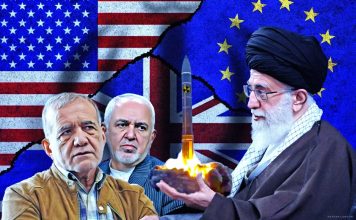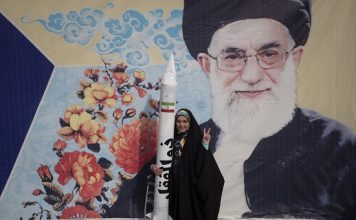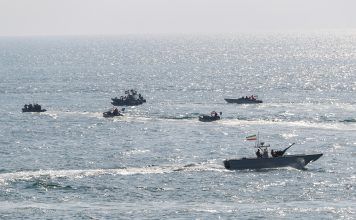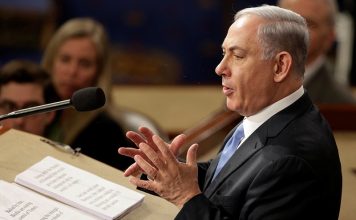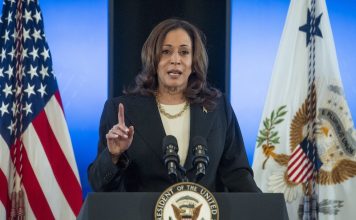By Ahmad Rafat
Pope Francis has condemned Iran’s use of the death penalty against protesters, demanding greater respect for women.
He made the remarks during his annual speech to foreign diplomats accredited to the Vatican on Jan. 9.
“The right to life is also threatened in those places where the death penalty continues to be imposed, as is the case in these days in Iran, following the recent demonstrations demanding greater respect for the dignity of women,” the Reuters news agency reported, quoting Pope Francis.
[aesop_image img=”https://kayhanlife.com/wp-content/uploads/2019/06/pope-8998384.jpg” panorama=”off” align=”center” lightbox=”off” captionsrc=”custom” captionposition=”left” revealfx=”off” overlay_revealfx=”off”]
The pope’s comments mark the first time that a head of the Roman Catholic Church has directly and unambiguously criticized the Islamic Republic.
“The death penalty cannot be employed for a purported state justice since it does not constitute a deterrent nor render justice to victims, but only fuels the thirst for vengeance,” Pope Francis added.
He called for an end to the death penalty, arguing that “it is always inadmissible since it attacks the inviolability and the dignity of the person.”
In his previous Christmas messages, Pope Francis had condemned capital punishment without naming Iran. However, the pope criticized the Islamic Republic directly in his last speech.
During his return flight from Brazil to Rome in November, the pope was asked about the protests in Iran under the slogan of “Woman, Life, Freedom.”
Without naming the Islamic Republic, Pope Francis said: “Women demanding equality is an ongoing fight which has yielded results in some countries, but continues in others.”
“The absence of women in various social spheres makes for a poorer society,” he added.
[aesop_image img=”https://kayhanlife.com/wp-content/uploads/2020/01/2020-01-09T111721Z_1_LWD0017FY2EKN_RTRWNEV_E_4025-IRAQ-SECURITY-IRAN-POPE-HANDSHAKE.jpg” panorama=”off” align=”center” lightbox=”on” captionsrc=”custom” caption=”Pope Francis speaks with Iran’s ambassador to the Holy See, Seyed Taha Hashemi during an audience for the traditional exchange of the New Year greetings, in the Sala Regia state hall at the Vatican, January 9, 2020. REUTERS/Remo Casilli./” captionposition=”left” revealfx=”off” overlay_revealfx=”off”]
During his Sunday address, known as Urbi et Orbi (an apostolic blessing given by the pope on solemn occasions such as Easter and Christmas), Francis called for an end to the “shedding of innocent blood” in Myanmar, Yemen, and the Islamic Republic.
He was referring to the war in Yemen, the killing of Muslim minorities by the military junta in Myanmar, and the murder of protesters during the “Woman, Life, Freedom” revolution against Supreme Leader Ali Khamenei’s rule.
Since its formation in 1979, the Islamic Republic has had an informal agreement with the Vatican under which the latter would not criticize Tehran. In exchange, the regime would not pressure or oppress the Catholic community in Iran, comprising Armenians (about 300,000 adherents), Assyrians (about 20,000 adherents), and Chaldeans (about 4,000 adherents).
It is the first time since reaching this informal agreement four decades ago that the head of the Catholic Church has directly and unambiguously criticized the Islamic Republic.
The Catholic Church had not criticized the Islamic Republic in the last 40 years, not even once, for its oppression of Christians, particularly those converted to Christianity.
Under this unwritten agreement, the Catholic Church had instructed all churches in Iran not to accept any converts born in the Muslim faith. Many in other branches of Christianity criticized this policy.
Iran Executions Amount to ‘State Sanctioned Killing’: UN Rights Chief
The Vatican was silent in 2021 when the Islamic Republic expelled Sister Giuseppina Berti, a 75-year-old Catholic nun who had worked for 26 years at a leprosy hospital in Tabriz, the capital of the northeastern province of East Azerbaijan.
After retiring, Sister Berti moved to a convent in Isfahan, the capital of the central province of Isfahan. The convent was established in 1937.
The Vatican was also silent when the Islamic Republic seized the house and the belongings of a group of Catholic priests in Isfahan in 2016.
However, there were signs of cooling in the relationship between Tehran and the Vatican when the pope visited Iraq in March 2021. While the pontiff held talks with Ayatollah Ali Sistani in Najaf, he refused to meet senior Shia clerics close to the Islamic Republic.
Some Iranian State media criticized the pope’s meeting with Ayatollah Sistani.
In comments reported by the Tehran-based Tasnim news agency, affiliated with the Islamic Revolutionary Guards Corps (IRGC), Ali Akbar Rashad, the director of the Research Institute for Islamic Culture and Thought, described the meeting between Pope Francis and Ayatollah Sistani as “notable and suspicious.”
Other Shia sources of emulation in the Qom Seminary made no comments about the meeting between the head of the Catholic Church and the most senior Shia leader worldwide, downplaying the significance of the talks, described by many as a historical event.
The Catholic church has existed in Iran since the reign of Shah Abbas Safavi (from 1588 until his death in 1629, aged 57.) The Vatican and Iran have maintained ties before and after the Islamic Revolution.
After the Dominican Republic, Iran has the largest number of diplomats at its embassy at the Vatican, which has been a cause for concern for some people, given that the Islamic Republic is not a Catholic or Christian country.
Some people believe the high number of Iranian diplomats in the Vatican, who have diplomatic immunity, could provide a cover for the Islamic Republic’s intelligence agents operating in Italy.
Two Iranian presidents have held official meetings with the pope in the past four decades. Former president Mohammad Khatami (in office from 1997 to 2005) met Pope John Paul II (his papacy began in 1978 and ended in 2005) in 1999. Former Iranian President Hassan Rouhani (in office from 2013 to 2021) met Pope Francis in 2016.
The late Pope Benedict XVI (who was pope from 2005 until he retired in 2013) was the only head of the Catholic Church who refused to meet a senior Iranian official. Pope Benedict refused to meet with Iranian President Mahmoud Ahmadinejad (in office from 2005 to 2013) and declined his invitation to visit Tehran.
The last time a senior Iranian official visited the Vatican was on July 13, 2022, when Foreign Minister Hossein Amir-Abdollahian met the Vatican’s Cardinal Secretary of State, Pietro Parolin, and Secretary for Relations with State, Archbishop Paul Richard Gallagher.
Mr. Abdollahian reportedly asked the Vatican to pressure the US and European governments to lift sanctions on Iran, promising that Tehran would protect Christian communities in Iran, Lebanon, Syria, and Iraq in return.



